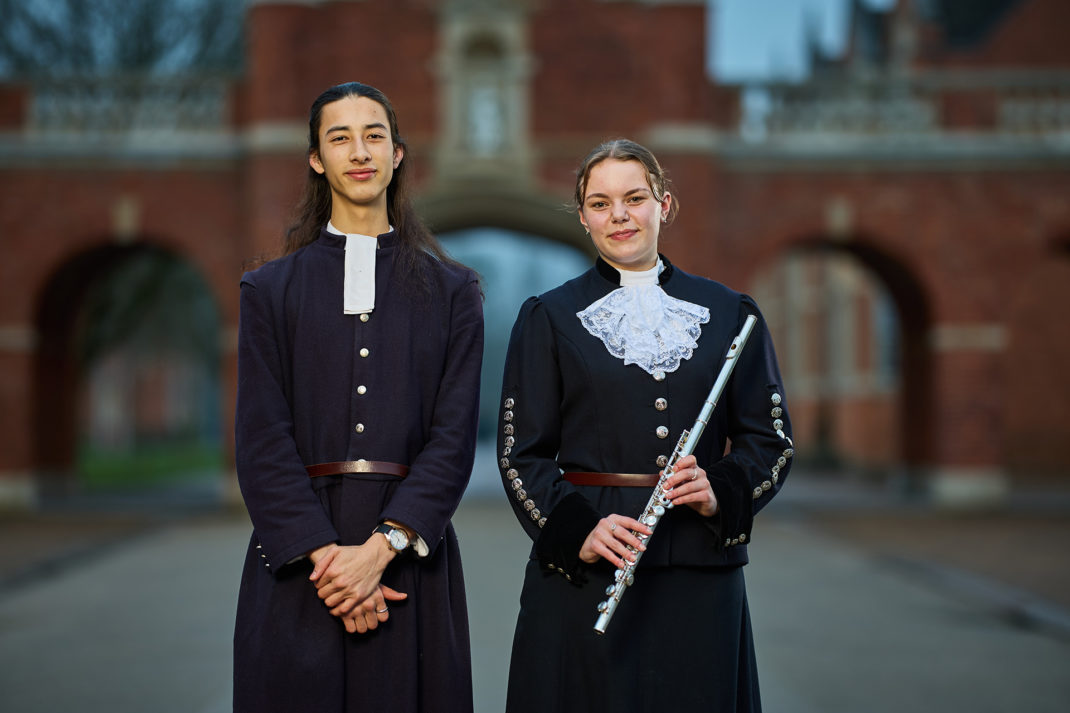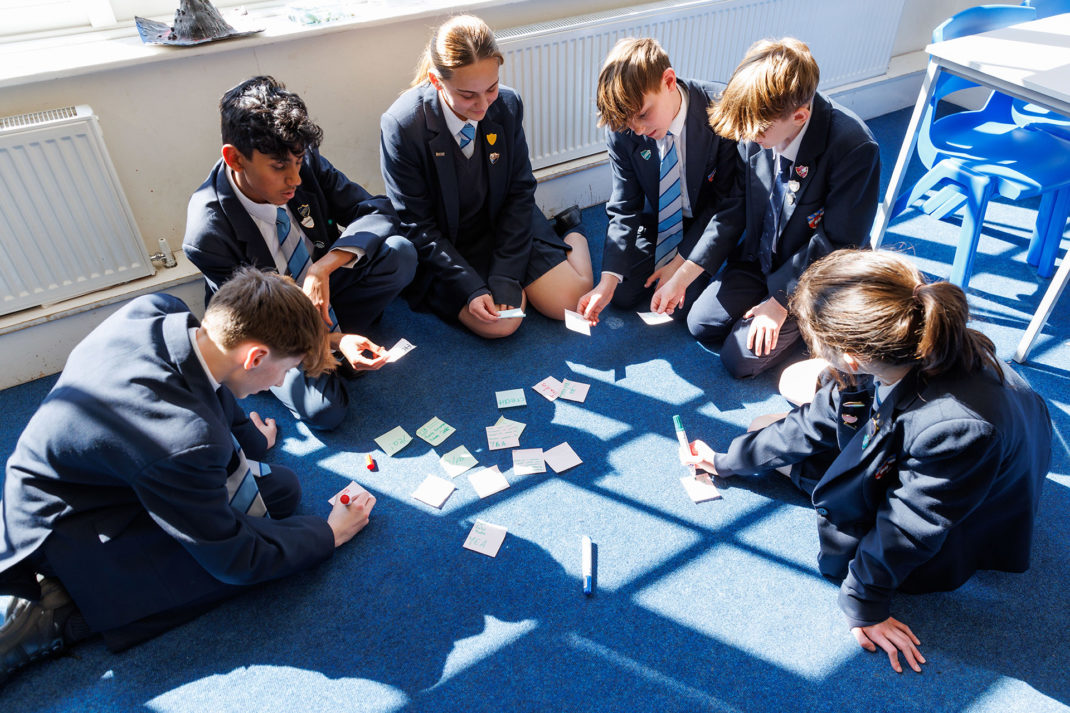The Best Senior School Science Labs
By
8 years ago
School House uses the litmus test to find out which senior schools are in their element when it comes to science
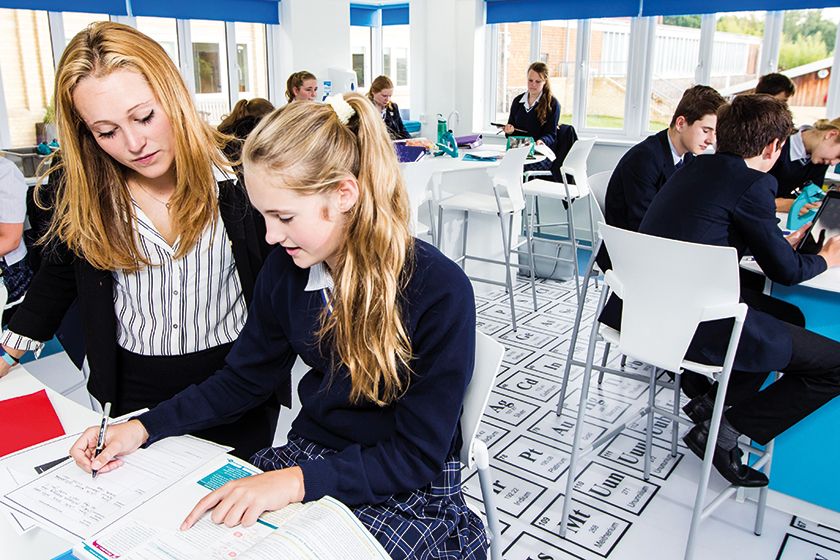
With 3D biology, cloud chambers and periodic table flooring to rooftop greenhouses, school science labs are reaching for the skies. Here we round up ten of the best at senior schools across the UK.
10 of the best school science labs
The Abbey School
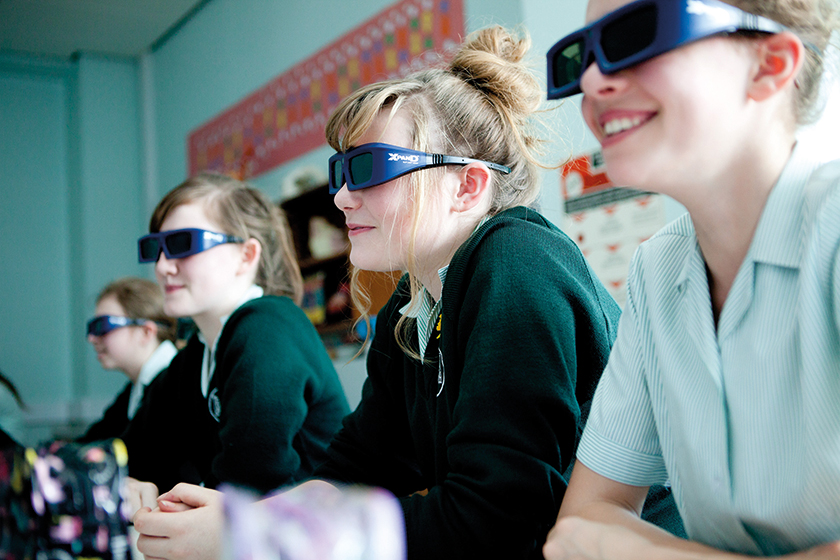
Biology lessons take on a new dimension at this junior and senior girls’ day school. The Abbey School is currently trialling the effectiveness of haptic technology in partnership with the University of Reading. Year 7 girls are introduced to 3D computer graphics with immersive demonstrations adding sensory experiences to help them grasp exciting new concepts. Texas projectors and 3D specs enable the girls to learn about everything from white blood cells, the structure and function of the heart, ears and eyes to the inside of a leaf with impressive results. And the results are in: ninety per cent of candidates achieved an A* grade in biology GCSE in 2016.
Abingdon
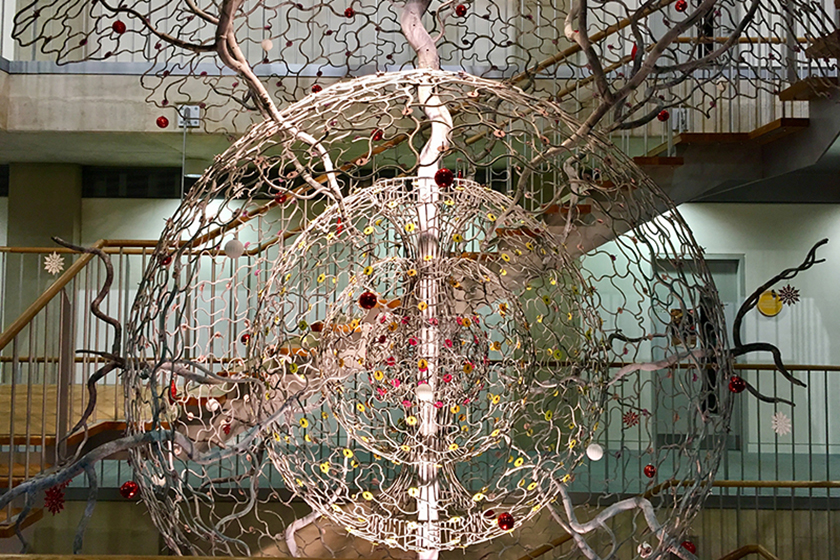
The Yang Science Centre places this boys’ school’s science department firmly in the future. It has 21 teaching laboratories, study areas, project rooms and preparatory rooms. A three-storey high sculpture representing chemistry, physics and biology brings art into the centre of the building, attracting many visitors, including pupils from neighbouring schools. Students were delighted to interact with an alligator, a python and giant millipedes as part of a recent biology talk. Science is a big success at Abingdon. Over two thirds of boys studying chemistry and physics obtained the top A* grade in last year’s GCSE exams.
Bryanston
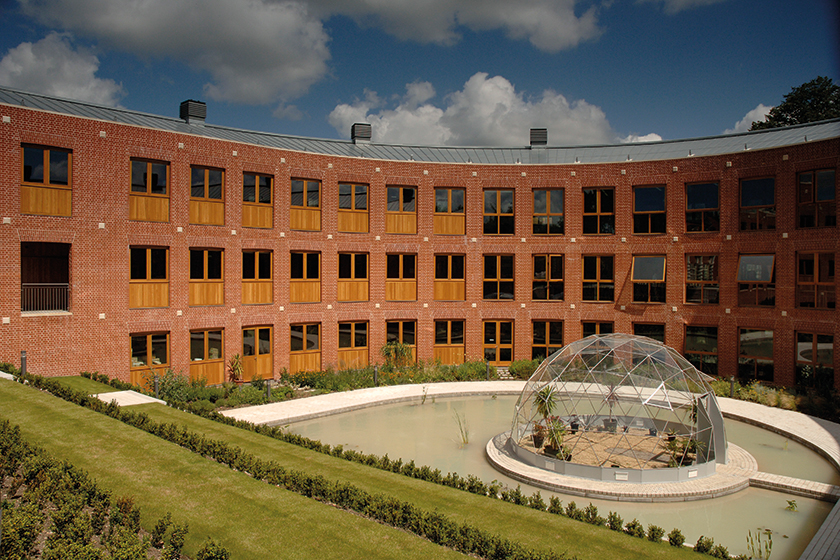
Bryanston’s 18th-century stately home is complemented by a modern red brick grand design science building. The Sanger Centre, named after old Bryanstonian and two-time Nobel laureate Frederick Sanger is a magnificiant semi-circular science centre with a floor dedicated to each science discipline. Biology classrooms are on the ground floor allowing easy access to the science garden, while chemistry lessons take place up top in order to ventilate fumes from experiments. The physics department’s research lab on the middle floor houses a wave tank and a wind tunnel. The building is well used, and over half of the school’s sixth-form pupils choose at least one science as part of their programme of study at Bryanston. GCSE pupils celebrated a strong year in 2016 with 90 per cent of physics, 78 per cent of biology and 76 per cent of chemistry entries graded at A* or A.
Alleyn’s
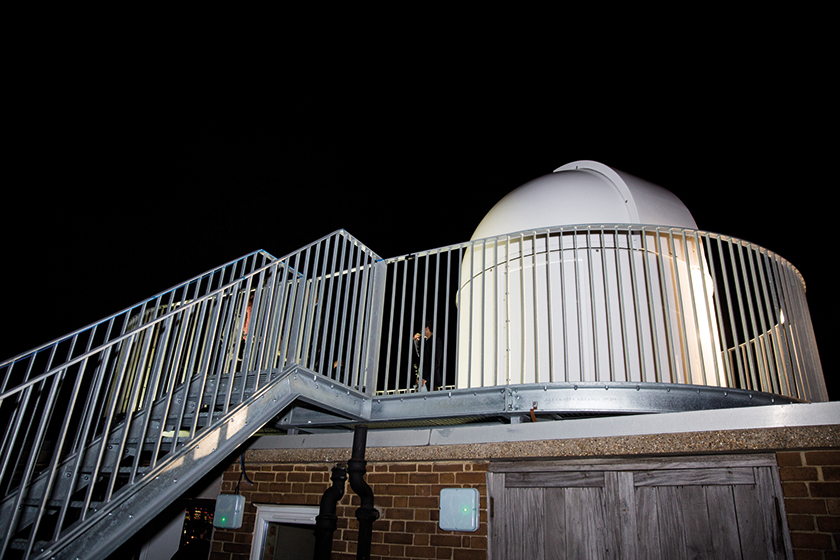
Over 60 per cent of sixth-formers at Alleyn’s, a co-ed day senior school, take at least one of the four sciences with impressive exam results. Their commitment to science is reflected in a spanking new science building with state-of-the-art laboratories and a rooftop observatory. Pioneering technology and devices include its very own cloud chamber, which allows pupils to view the effects of individual electrons and alpha particles. Inspiration is not hard to come by at this city school. Its scientist-in-residence is Adam Rutherford and last March, Professor Brian Cox opened the new building with an inaugural science lecture.
Bedales
Few school observatories are as special as the Kadian Observatory at Bedales. It was built by pupils as part of the Bedales Assessed Course, Outdoor Work. In keeping with the hands-on spirit of the co-ed boarding and day senior school, the structure was built from scratch in honour of a Bedale’s pupil, who tragically died in a cycling accident in 2012. The observatory houses a powerful Meade Schmidt-Cassegrain telescope with a 12-inch aperture lens. It’s capable of exploring more than 50,000 celestial objects and providing enough light for close-ups of the rings of Saturn. Pupils already flock to the weekly Sky at Night activity led by Bedales’ Allen Shone.
Queen’s Gate School
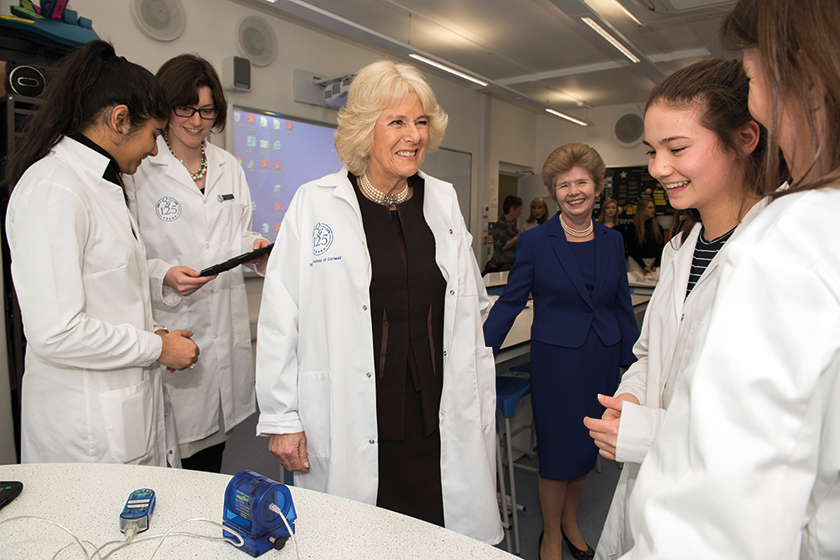
HRH, The Duchess of Cornwall returned to her roots at Queen’s Gate School to celebrate 125 years of education and to officially open the new science laboratories, stocked with brand new equipment including a cloud chamber. The city day school for girls aged four to 18 has embraced iPad technology with girls from Year 6 using educational apps like MatchGraph for data logging, Poplet, Midnight Planets and Voyager.
Oundle
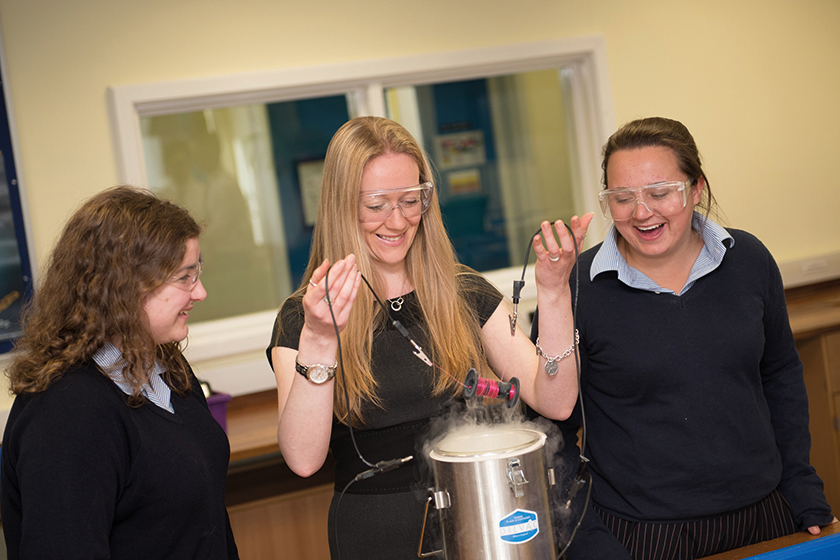
Oundle School’s SciTec campus is admired by universities and industry leaders alike for its splendid teaching facilities. The second phase of the award-winning science complex, built in 2007, was completed last year. Oundle is extending and completely refurbishing its engineering facilities, co-locating mathematics with engineering and sciences, and, in turn, creating one of the first dedicated STEM campuses in any UK school. And the results are in – 81 per cent of GCSE biology entrants gained A* grades in 2016 and 73 per cent of Oundle’s A-level physics candidates are now girls.
Reed’s
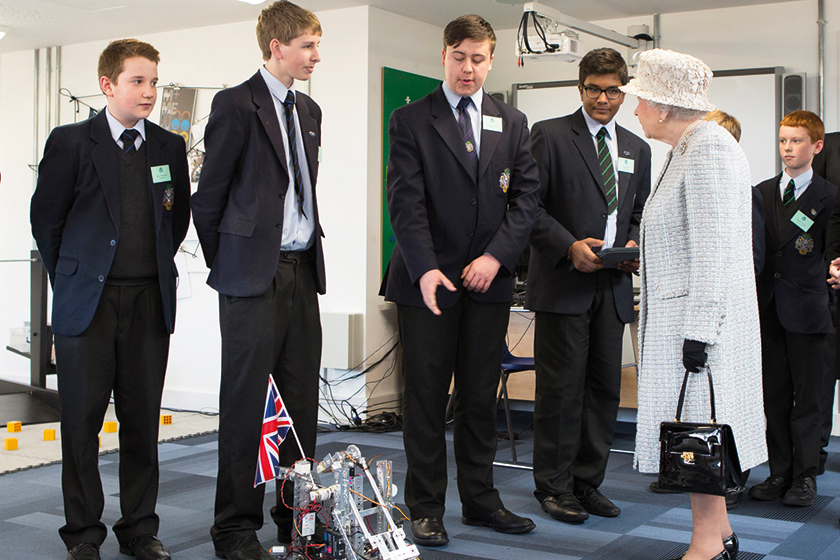
At Reed’s, a day and boarding boys’ school with a co-ed sixth form, their FutureTech programme is tackling the commercial skills shortage in design, science, technology, engineering and mathematics head-on through a comprehensive cross-curricular programme. The pupil’s robotics presentation even impressed the Queen when she visited in 2014. Reed’s achieved its best ever GCSE results in 2016, notably in the STEM subjects.
Dunottar

This co-ed senior day school gave its science lab a makeover last year. Futuristic and fun, the chemistry lab’s periodic table flooring got a fantastic reaction from Dunottar pupils and staff when it was unveiled. Not that the funky flooring distracts pupils from their learning – you will find bright and inquisitive pupils engaging in a whole range of scientific tasks and activities, inlcuding the school’s hugely popular lunchtime dissection club.
Woldingham
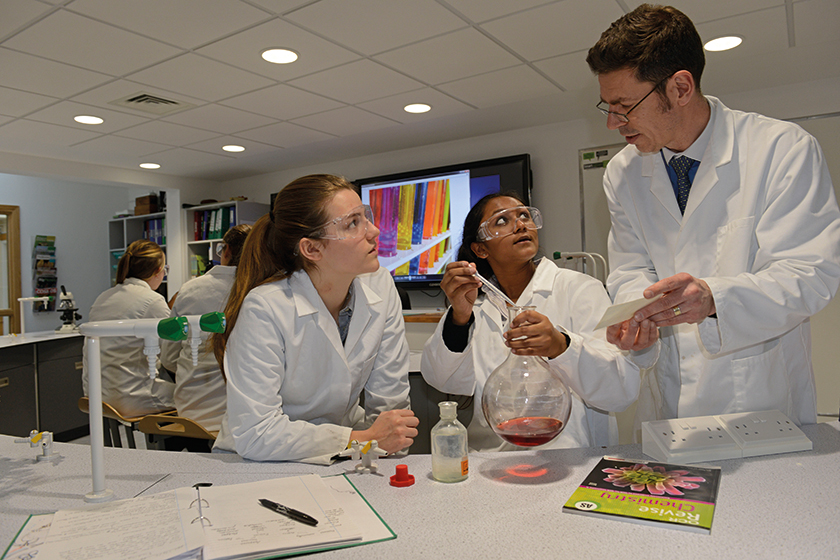
A third of the girls at Woldingham study the sciences at A-level, and now the school has opened an impressive new science centre, designed to encourage interactive learning. Opened by the physicist, oceanographer and BBC presenter, Dr Helen Czerski, the three-year project houses state-of-the-art labs, two preparation rooms and a rooftop greenhouse. The school runs an extensive programme of academic enrichment, including how to make your own cosmetics and café scientifique.

